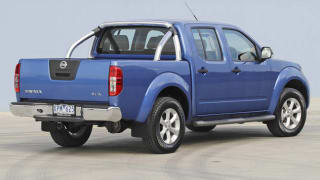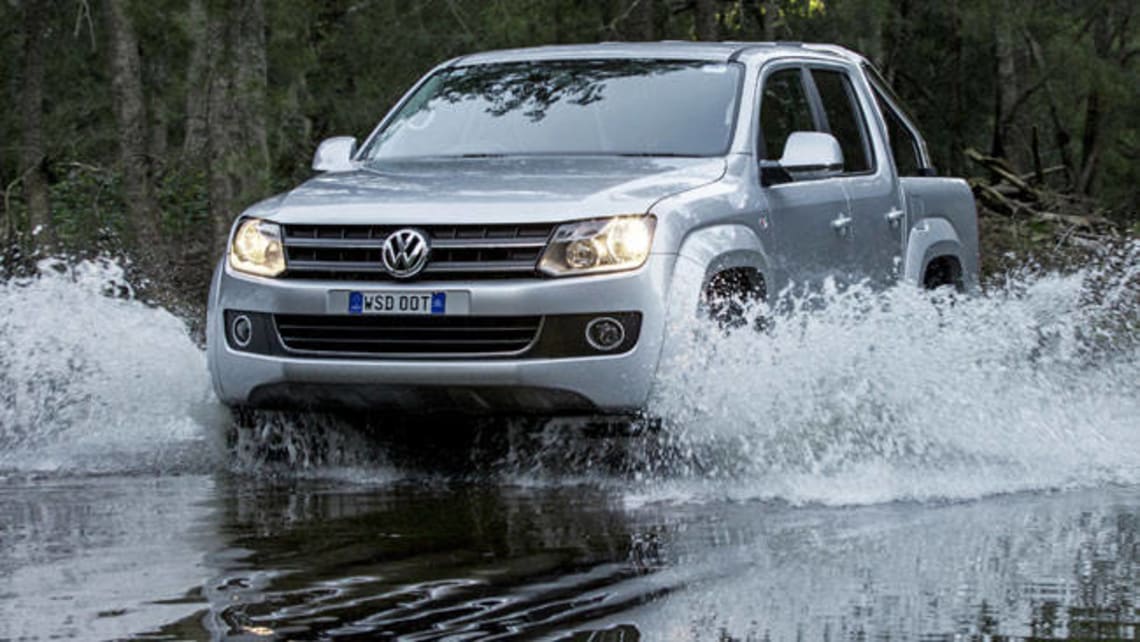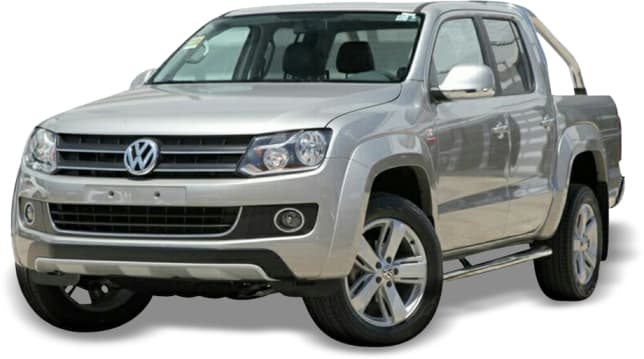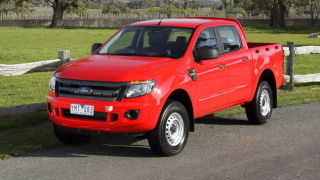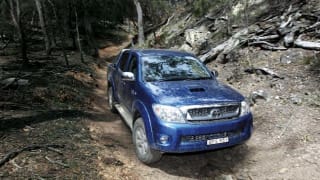It’s a battle of the giants. Volkswagen’s Amarok is taking on a Titan: the sales-topping Toyota HiLux.
The Amarok range has just been bookended with a single-cab version to attract the tradies, and an eight-speed auto – the first in a ute here -- for the weekend warriors (and tradie bosses).
So badge snobbery comes to the building site, and cashed-up contractors can get a European vehicle to broadcast how well they’re doing.
PRICE AND MODELS
There’s a dizzying list of 24 different models by the time you choose from the 2.0-litre petrol and diesel engines, bodies and spec: Trendline, Highline and Ultimate.
The single-cab chassis models start from $24,490 for the 118kW/300Nm 2.0-litre turbo petrol (with a six-speed manual driving the rear wheels) and move to $27,490 for the 90kW/340Nm turbodiesel version, while the 4WD 120kW/400Nm turbodiesel will ask from $35,490 (with ute bodies adding an extra $1500 across the range).
Dual-cab chassis versions kick off with the rear-drive six-speed manual 90kW/340Nm TDI from $30,490, followed by the 118kW/300Nm TSI from $31,090, and the intercooled twin-turbo 120kW/400Nm TDI at $32,490, with the last of those getting 4WD for $41,490.
The eight-speed ZF conventional auto – VW’s dual-clutch boxes slip too much for offroading -- arrives only with the 4WD 132kW/420Nm dual-cabs, starting from $44,490 and topping out at the $61,490 Ultimate spec. A couple of price tags down is the one we tested at $53,990 in mid-spec Highline -- $3000 more than the manual version, but partly because VW has carved $2000 off the latter’s price.
At this level you get a decent six-speaker audio system, Bluetooth streaming and dual-zone climate control on the goodies list. Our test ute had VW’s ‘4Motion’ full-time AWD with a Torsen centre diff that normally runs 40:60 front/rear, but varies on demand to deliver outputs to the wheels with best traction.
The ZF usually starts off in second gear on bitumen, because it has an ultra-low first ratio for general offroading – plus a selectable offroad mode for serious clambering that adjusts the stability, traction, brake and electronic diff lock responses.
Our test ute bounced around on the standard heavy-duty leaf-spring suspension, begging for a load in the tray. There’s a no-cost comfort suspension option for those who don’t have a heavy toolbox to calm things down, but it drops the payload by 220kg (to 740 on ours).
DESIGN
It’s high, wide and handsome. Squared off lines give the body a tough and purposeful look, set off in our Highline with stainless steel rear bumper, side-steps and sports bar - but undermined by looking a bit undershod with 17-in alloy wheels nowhere near filling the cavernous flared wheel arches. Legroom and shoulder room is great front and back, so there’ll be no bromance taunts.
The interior is clean and hardy, but still manages to add a slight touch of premium in the trim and equipment, with intuitive controls from big chunky buttons. No flimsy hipster switchgear here, mate. The clip-on cupholder looks like it won’t last 10 minutes sticking out of the dash, and the glove box is ludicrous, with barely space for a notebook unless you remove the owner’s manual.
But there are plenty of storage spaces around the cabin, including underseat bins and massive door pockets. There’s also enough space between shifter and centre console bin to look at mounting a small laptop. You have to applaud three 12v outlets in cabin and another in the tray, plus a light back there – no more fumbling around in the dark.
SAFETY
The Amarok led the ute world with a five-star ANCAP safety rating, and gets dual front and front-side airbags - although it misses out on curtains -- anti-lock brakes with electronic assistants, stability and traction controls, plus trailer sway control.
DRIVING
The ZF gearbox is slick and refined, and comes into its own at both ends of the scale, with first giving decently low crawling ability, and eighth offering economical highway running around a relaxed 1700rpm. But the auto is keen to make the best of any economy opportunity by heading up towards eighth gear, and when you kick, it often goes down two cogs.
Slipping into manual mode gets clearer response for overtaking, but a whole lot more noise from under the bonnet, and most of the time it’s well-sorted enough to work out what it needs to do in auto. It’s hard to believe the torquey engine is just two litres, with its ability – and sometimes its noise – punching well above that size.
A glance at the fuel economy is the compensation, with it happily averaging mid 9s over a mixture of low-gear dirt crawling, highway cruising and suburban frustration. Apart from the empty tray making for some bouncing over uneven surfaces, it’s surefooted and well-behaved, and ride comfort is exceptional for a big ute. And big it certainly is. Impressive on the street, but even with the cabin’s good visibility, the rear parking acts are a blessing to wedge the beefy tail into place.
VERDICT
You might scoff about badge snobbery – or cog-upmanship – hitting the building sites. But overall this is a solid blend of hardy workhorse and some creature comforts that make working life a bit more bearable.
